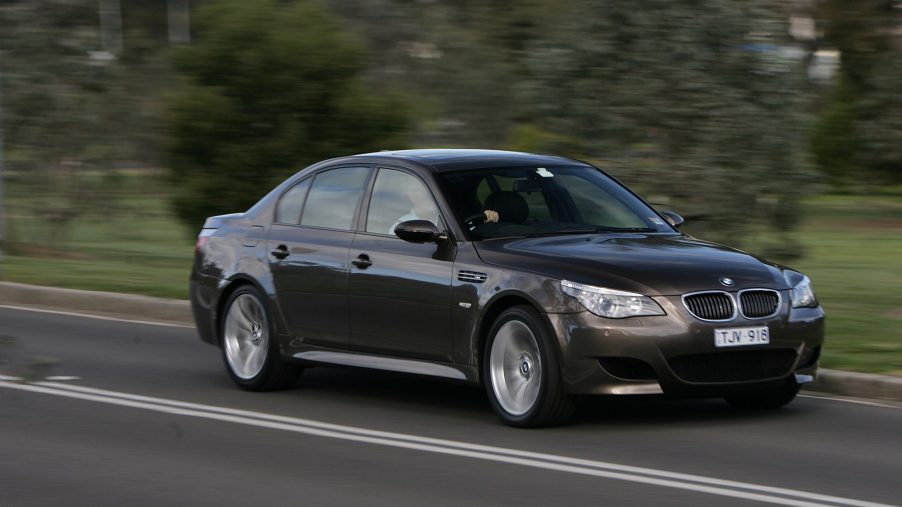
7 Cheap Used Sports Cars That Really Cost a Fortune to Own
Seven examples of cheap used sports cars that are expensive to own article highlights:
- You can consistently find cheap E60 M5s and E63/E64 M6s, but their V10 powertrains are expensive headaches; the E46 and E92 M3 are cheaper to own, but the former costs a lot of wrenching time
- The timing-chain-related issues with the B7/B7 Audi S4’s V8 make it a cheap used sports car worth skipping, while the 2008-2011 Mercedes-Benz CL 63 AMG is expensive to maintain, period
- Dealing with a Jaguar XK8’s electronics and timing-chain tensioners can be a costly hassle, and while very cheap, a used Mazda RX-8 has some tricky maintenance requirements
The average price of a used car might be over $28K for now, but some are still reasonably priced. Even used sports cars aren’t necessarily priced to the moon and back. Whether you’re on a tight budget or just want a below-average sticker price, cheap sports cars are out there. However, some of these depreciated diamonds turn out to be rough on your wallet once you roll them off the lot. Yes, you can buy the models described below for less than $28K. But you’ll likely spend a lot more to keep them running once all is said and done.
It may have a V10, but the E60 BMW M5 is a cheap used sports car you should absolutely avoid
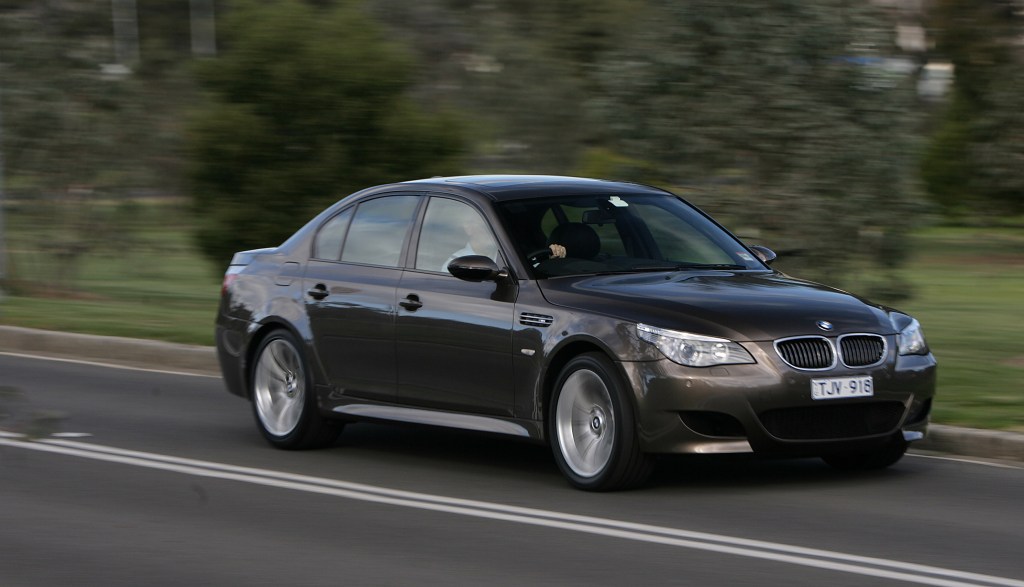
Used BMWs are often surprisingly affordable to buy, even the M cars. And there’s one that, even as its predecessors go up in value, stays cheap: the E60 BMW M5.
The 2005-2010 BMW M5 is beloved and bemoaned in equal measures, and it all starts with what’s under its hood. It’s the first and only M5 with a V10, a 500-hp 5.0-liter V10 developed with help from the BMW Sauber F1 team. Plus, while many E60 M5s ended up with seven-speed SMG single-clutch automated manuals, an honest six-speed manual was available.
A 500-hp V10-powered manual sports sedan that redlines at 8250 rpm? And one you can get for less than $30,000? On paper, that sounds awesome. But IRL, this is a cheap used sports car you need to steer clear of because it’s a maintenance nightmare.
Firstly, the E60 M5’s S85 V10 is notorious for its “brittle” rod bearings, FCP Euro explains. If they break, at best, you need to pay $10K for new ones. Not just for the parts, mind you, but the service, too: you have to remove the front suspension and subframe. And that’s the best-case scenario; at worst, you’re out an engine.
Admittedly, the E60 M5’s other engine issues, such as old VANOS components, often plague other used BMW sports cars. But it has problems outside the engine bay. Chief among them is the SMG transmission, which often develops hydraulic problems, electrical glitches, mechanical faults…you get the picture.
Yes, the E60 M5 is a fun, luxurious, used sports car. But owning one won’t be cheap.
The E63/E64 BMW M6 is a cheap, stylish used sports car saddled with expensive problems
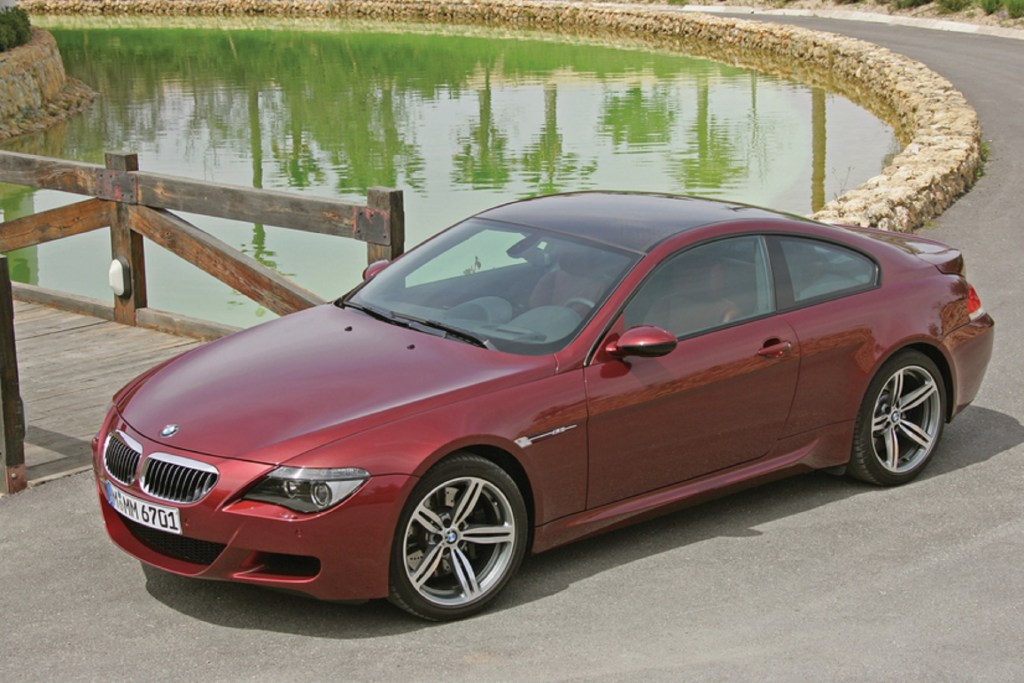
While the E60 M5 was the first production car with a V10, BMW soon gave it a sibling: the E63/E64 M6. Yup, the sportiest version of the 6 Series also got the S85 V10. And that means it has the same rod-bearing and transmission problems. Also, both the E63/E64 M6 and E60 M5 sometimes develop oil-starvation issues, which can lead to total engine failure, PistonHeads says.
However, even if you get a manual example and install stronger rod bearings, you’re not out of the woods. Since the 2006-2010 BMW M6 and 2005-2010 M5 have 5.0-liter V10s, they’re not exactly the most fuel-efficient used sports cars. Also, these engines tend to consume oil even when they’re not leaking and have shorter-than-average spark plug replacement schedules. The V10’s throttle actuators can also fail prematurely, though as you’ll see later, it’s not an S85-only problem.
Thankfully, if you want a stylish used BMW M sports car at a reasonable price, there is an E60 and E63/E64 alternative. There’s a US company that can import and modify the E60-gen Alpina B5 to comply with EPA and safety regulations. And the B5 is roughly as fast as the M5 and M6, but it has a conventional automatic, comfier ride, and a less trouble-prone engine.
Even if you like wrenching, a B6 or B7 Audi S4 isn’t a cheap used sports car to own
I promise this list of cheap used sports cars to avoid isn’t just a list of German cars. But there’s at least one more here: the B6 and B7 Audi S4.
One MotorBiscuit writer described the 2004-2009 B6/B7 Audi S4 as “a great stick shift paired to a hand grenade.” While that’s a bit excessive, it’s more than a little true. The B6/B7 S4 has a 4.2-liter V8 paired with either a six-speed manual or automatic. On other Audis, this engine is fairly reliable as long as you clean out the carbon deposits. But the version in the B6/B7 S4 is another matter.
On the plus side, the B6/B7 S4’s 4.2-liter V8 has a timing chain, which is longer-lasting than a belt. However, the chain slides around plastic tensioners and plastic chain guides, which tend to break. And when they do, the chain starts playing ‘the death rattle.’
In all fairness, the B6/B7 S4 isn’t the only used sports car with failure-prone timing chain components. But the expensive parts failure isn’t the only problem. In the 2004-2009 S4, the V8 is mounted with the timing chain facing the firewall. So, to replace the timing chain, you have to remove the engine from the car.
Theoretically, home mechanics can replace timing chains and drop engines. But even so, this is one used sports car bargain that might be worth skipping over. Or get a 2012-or-later S4, which has a different engine.
A Mercedes-Benz CL 63 AMG is cheap to buy but expensive to run
Thanks to depreciation, a used Mercedes-Benz is often more affordable than you think, and that includes sports cars. And some Mercedes models, even AMG ones, are rather reliable. But there’s at least one swath of cars that should be avoided. And the 2008-2011 Mercedes-Benz CL 63 AMG is arguably the most expensive-to-own example.
Firstly, as a CL-Class, it’s basically an S-Class coupe. So, it has a wide array of electronic and luxury features that are often pricey to repair. Jeremy Clarkson of Top Gear once bought a used CL and had to replace a faulty ignition coil. The repair, admittedly performed at a dealership, cost him over $1500, CarBuzz reports. And keep in mind, the part costs like $50.
The bigger issue with the 2008-2011 CL 63 AMG, though, is the rest of its engine. This CL 63 generation, like the contemporary C63 and R63 AMG, uses the 6.2-liter ‘M156’ V8. 2012-and-earlier versions of this V8 have break-prone cylinder head bolts. If they break, coolant can enter the combustion chamber, and you’re out an engine, FCP Euro explains.
Also, while some of the M156’s maintenance items—crankcase breather valve, oil leaks, gasket failures—are ‘normal’ age-related issues, others decidedly aren’t. For example, it’s considered normal to replace the M156’s camshaft, camshaft adjusters, and hydraulic lifters at roughly 100,000 miles, FCP Euro says. Such is the cost of a high-performance, hand-built V8. In addition, the M156 has plastic idler pulleys, and if they fail, they can damage the drive belt and its related components.
You can find CL 63 AMGs for less than $30,000 online. But as tempting as this used luxury sports car might be, it’s still a high-performance S-Class. And that means it’s not cheap to own.
The Jaguar XK8 offers inexpensive luxury style and potentially high running costs
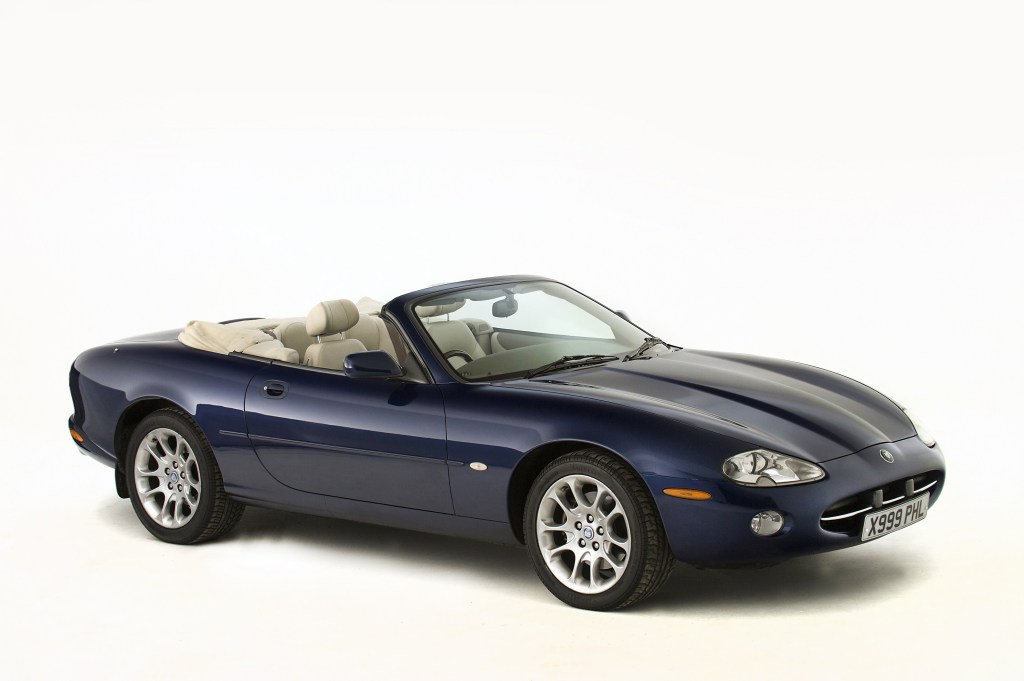
Yes, as I said earlier, used cheap German sports cars aren’t the only owns that can be expensive to run. It’s technically a near-classic at this point, but the 1997-2006 Jaguar XK8 also falls on this list.
The prequel to the Jaguar XK, the XK8 has a lot going for it. Available as a coupe and a convertible, you can buy one for as little as $10,000. Pre-2003 examples have 294-hp 4.0-liter V8s, while later cars have 305-hp 4.2-liter V8s. And the supercharged XKRs, which often sell for less than $20K, have 375 hp and 406 hp, respectively. Plus, these V8s are wrapped in stylish sports cars with comfortable leather-upholstered interiors and optional electronically-adjustable dampers.
Unfortunately, the XK8’s repair bills can rapidly approach its purchase price. The early 4.0-liter cars’ Nikasil cylinder liners couldn’t handle high-sulfur gasoline, something BMW also briefly struggled with. Jaguar replaced the liners under warranty and starting in 2000, used steel liners from the factory, and high-sulfur gasoline isn’t an issue anymore, PH notes. However, even the 4.2-liter V8s have plastic timing chain tensioners that, like their Audi counterparts, often fail as they age.
In addition to the plastic tensioners, the XK8’s water pump is hard to monitor and is known to fail. Also, 4.0-liter cars’ transmissions often weren’t serviced as often as they should’ve been, and might require replacement, PH says. Furthermore, while the electronic dampers give a comfy ride, they’re expensive and difficult to replace. You also have to worry about random electrical glitches, battery drain, corrosion, and on pre-2000 cars, steering column failure.
A well-maintained Jaguar XK8 can be a great used sports car. But keeping it going won’t be cheap.
The BMW E46 M3 is easier to work on than the E92 M3, but owning either used sports car can cost you
There’s a common sentiment amongst the used sports cars on this list: dealership work is expensive. Although wrenching isn’t easy, if you can do some repairs at home, it will often save you a ton of cash. However, while the E46 BMW M3 is easier to wrench on than its successor, the E92/E93/E90 M3, what you’ll save in money will often cost you in time.
Dynamically, the 2000-2006 M3 is a knockout. Communicative steering, solid chassis, and a gem of an inline-six engine. But that S54 engine has mechanical lifters, so it requires valve adjustments every 30,000 miles. Also, in addition to the common old BMW cooling system and VANOS issues, early E46s had rod bearing problems. Plus, some hard-driven E46 M3s develop rear subframe cracks, though the well-regarded experts at The Enthusiast Auto Group say it’s not as common as some assume.
Admittedly, a clean E46 M3 likely won’t have any of these issues. However, clean E46s go for way more than $28,000. And high-mileage ones, while noticeably cheaper, might have some lingering faults.
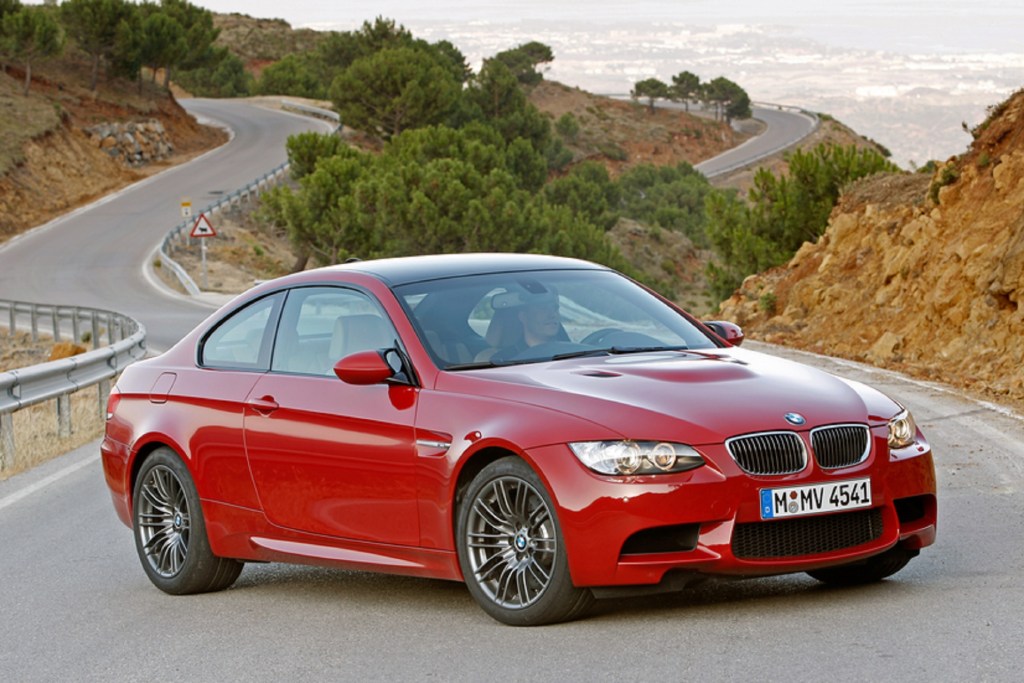
The 2008-2013 E92 M3, meanwhile, is still an affordable used BMW sports car. But it ain’t cheap to keep running. For one, while not as prevalent as in the S85, the E92’s S65 4.0-liter V8 suffered rod bearing failures, too. There are more durable replacements available, but some owners regularly replace even these, CarBuzz says. And that can cost up to $2000, even if you DIY it.
Secondly, the S65’s throttle body actuators sometimes fail randomly, which makes the M3 go into limp mode. Replacing throttle body parts isn’t as tough as swapping rod bearings, but the parts aren’t cheap. Plus, if the M3’s idle-control valve fails, you’re out $700 just for the part.
If spending time instead of money isn’t a problem, the E46 M3 isn’t a heinously-expensive used sports car. But it and the E92 M3 won’t be cheap to keep on the road.
Modifications can help, but the Mazda RX-8 is a used sports car that requires deep patience and pockets
Unlike the other cheap used sports cars listed here, the Mazda RX-8 isn’t a depreciated luxury car. If anything, it’s arguably underappreciated, at least if you’re a rotary enthusiast. And you can score a low-mileage manual second-gen RX-8 for less than $15,000.
Unfortunately, you have to be a rotary enthusiast to live with the RX-8’s expensive habits. The Renesis rotary engine only displaces 1.3 liters, but it has a big thirst for fuel. Also, because of how rotary engines work, the RX-8 has to burn oil; and it’s rotary-specific oil, which is more expensive. Plus, the RX-8 has short ignition coil and spark plug replacement intervals, can’t be turned off if it’s too cold, and have a reputation for consuming apex seals. The latter issue mostly applies to early RX-8s, but any overheated and/or carbon-coated one can develop warped seals.
According to some, though, there’s a way to modify your way around these issues. Installing a Sohn adapter in your RX-8 lets the engine use two-stroke premix to lubricate its apex seals and combustion chamber. Allegedly, this prevents carbon buildup and lets you safely use synthetic oil. Also, two-stroke premix is designed to burn.
Admittedly, replacing parts on an RX-8 will still likely be cheaper than doing the same for, say, a CL 63 AMG. But rotary engines require proper care and higher expenses. If you can’t give either, this is one cheap sports car that you might want to skip.
Follow more updates from MotorBiscuit on our Facebook page.


